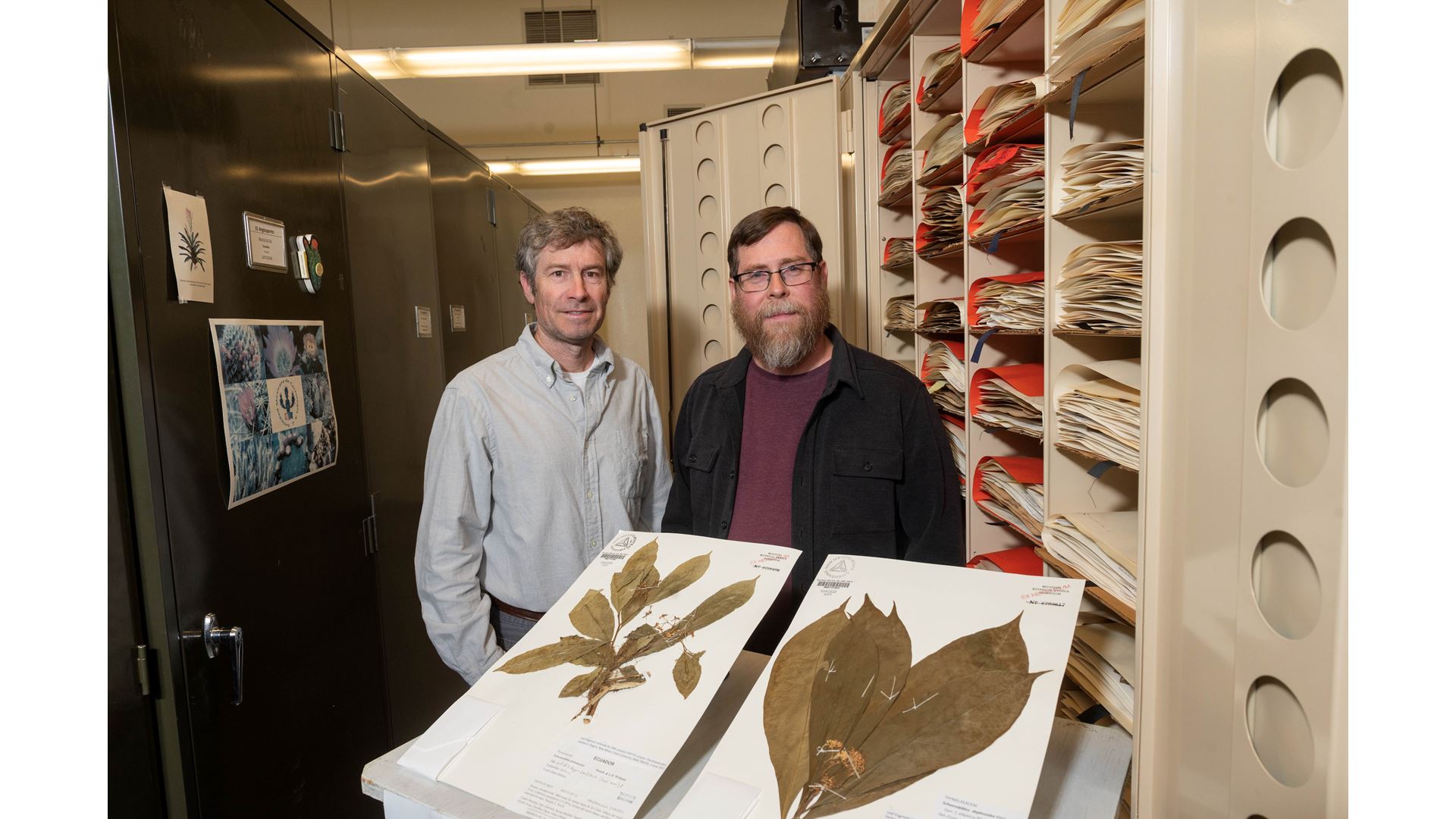Two New Mexico State University professors are among a group of scientists from around the world to use a breakthrough DNA-sequencing toolkit, involving 138 organizations internationally and contributing to a major milestone for plant science built on 15 times more data than any comparable studies of the flowering plant tree of life.
Donovan Bailey, NMSU biology professor, and Zachary Rogers, NMSU Herbarium curator, are among 279 researchers, led by the Kew Royal Botanical Gardens in London, who contributed genetic data of flowering plants and analysis to a new massive database. The group decoded DNA from samples of more than 9,500 species of angiosperms, seed plants that produce flowers. Angiosperms represent approximately 80% of all known living plants.
The authors published their results in the April 24 edition of the journal “Nature,” which sheds new light on the evolutionary history of flowering plants. The article, titled “Phylogenomics and the rise of the Angiosperms,” is linked here.
In addition to providing novel results from the angiosperm tree of life, the study’s authors believe the new set of available genetic markers and associated data will assist researchers in future attempts to identify new species, refine plant classification, uncover new medicinal compounds, and conserve plants in the face of climate change and biodiversity loss.
“The toolkit is part of the larger project, using open source technology to remove earlier barriers to genomic research, including the use of few available genes and incomplete sampling of plant species,” Rogers said.
Kew developed the universal genomic markers in the DNA toolkit as one of three keys to completing their mission, using the open source technology to remove barriers to genomic research.
“They developed this set of markers using a new technology, making it available to everyone globally,” Bailey said. “The potential for this marker set to become universal is quite exciting, but more importantly, it sets a framework through which anyone can now use these same genetic regions, download the dataset from publicly available websites and use it to advance further research.”
Among the species sequenced for this study, more than 800 have never had their DNA sequenced before. The sheer amount of data and analysis unlocked by this research, which would take a single computer 18 years to process, is a huge stride towards building a tree of life for all 330,000 known species of flowering plants – a massive undertaking, even for an international collaboration (see Kew’s Tree of Life Initiative).
The other two keys for the study were to establish a global botanical partnership and to harness the world’s botanical collections. This is where NMSU’s Herbarium specimens and Rogers’ work were crucial.
“It’s important to point out that more than half of the data generated by this project came in the form of herbarium specimens,” said Rogers. “Herbarium specimens are dried plant specimens that are stored in collection facilities. Some of those plant samples were collected hundreds of years ago, and yet they still contain viable DNA. Specimens are used to better understand these evolutionary relationships and patterns of how different plant groups evolved over time.”
While Rogers was sequencing DNA of specimens from NMSU’s Herbarium, Bailey was working separately on specimens of the mustard plant family. “I work on the family of mustards and legumes, but in this particular case, they wanted me to help organize the sampling of everything for the mustard plant family,” Bailey said. “It’s a pretty big plant family, including broccoli, cabbage, cauliflower, kale and horse radish – all those nice sharp flavors that we like in some of our veggies.”
The new technology used in this project has increased the data available to be studied while the development of new markers is allowing more researchers to get involved, speeding up the process of subsampling entire plant genomes.
“So it’s an advance in terms of the data that was used,” Bailey said. “It’s an advance in the terms of number of species that were able to be used, and it’s an advance for the use of museum collections.”
The tree of life and all of the genomic data behind it are open and accessible to both the public and scientific community, including through the Kew Tree of Life Explorer. The study’s authors believe such open access is key to continued democratization of scientific data across the globe.
-30-
CUTLINE: From Left: Donovan Bailey, NMSU biology professor and Zachary Rogers, NMSU Herbarium curator, are seen in NMSU’s Herbarium, which houses approximately 105,000 specimens, some more than 180 years old. Bailey and Rogers are among 279 researchers from around the world who contributed to a massive database of flowering plant genomes. (NMSU photo by Josh Bachman)
CUTLINE: This figure is the time-calibrated phylogenetic tree for angiosperms based on 353 nuclear genes. The angiosperm tree of life includes the DNA of more than 9,500 flowering plants sequenced to produce a massive dataset of genome-scale markers. The image is like a periodic table for flowering plants and shows how various flowering plants are related. (Image courtesy Royal Botanical Gardens)
CUTLINE: The specimen on the left is from 1832, the specimen on the right is a living specimen. The DNA sequenced by scientists around the world in the study published in the journal “Nature” in April was taken from living and centuries-old specimens, including extinct and endangered species. (Images courtesy Kew Royal Botanical Gardens and Timothy Utteridge)

